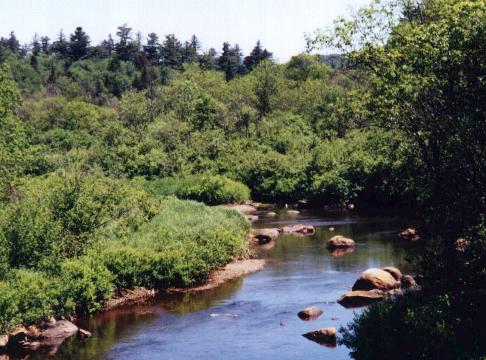

The rod: In our bubbling brooks and coursing streams many types of trees and flora surround the bank side as the river is a vital source of life in the ecology of the countryside. A long rod is not practical as the overhead snags are too numerous so I recommend at the most a rod of about 9 foot. So much has been wrote " and I think I have read it" regarding type of rod. Some say a stiff rod for Dry Fly fishing and Soft actioned one for Wet. The flow of the river constantly changes I often fish dry, wet and nymphs in one day a rod that you are simply comfortable with. When selecting a rod pick a one that has a bout a 6-7 rating, ones below that seem to me like toys and above like lake rods.
Fly lines: Fly lines have to be floaters, it s a waste of time buying a sinking line as you will just get snagged on a tree root or boulder. When I comes to reaching fish at a depth just simply use a weighted fly and a longer leader. For river fishing double taper lines are traditionally the norm as they give a better presentation, I cheat a little and use a forward taper. I keep a one of each, a good fly line you will get 2 or more seasons out of no problem. I it is really worth spending little more on your fly line than on any other type tackle as it is the thing that really expresses the spirit of "Fly Fishing".
Leader construction/ tippet strength: Again much has been written about leader construction and probably a lot of rubbish as well. Keeping it simple is the key. I always use a straight monofilament of about 3lb in strength. If the fish are particular especially in the summer when the river becomes crystal clear and low, I use a 1lb breaking strain. I am not a believe in tapered casts, making knotted ones just encourages tangles, and the amount of tangles and flies I go through buying them would cost a fortune.
Fly Reels: Fly reels are objects of great beauty and are bought for their looks. I believe is true as it really does not do any work at all, it is simply a device for storing the fly line. Most fish are played with the hand, simply retrieving the line manually. So there is really no need to spend a great deal on the reel, just make sure it balances the rod and is of a matt colour and not reflective at all.
Waders: Waders should be use and not abused, most of my good fish are caught without wading. They are essential though; I always buy the soft waist ones. I once had a really nice pair or rigid thighs ones which looked great. But the slightest bend and they would crack. I spent more money on repair resin fixing them than on the waders themselves.
Eye Protection: even if you don't wear glasses start now! A travelling fly accelerates through the air at about 70 miles per hour. To get caught in the eye would result in a serious injury. Please invest in a pair of sunglasses and a clear pair of glasses, you eyesight is for life.
